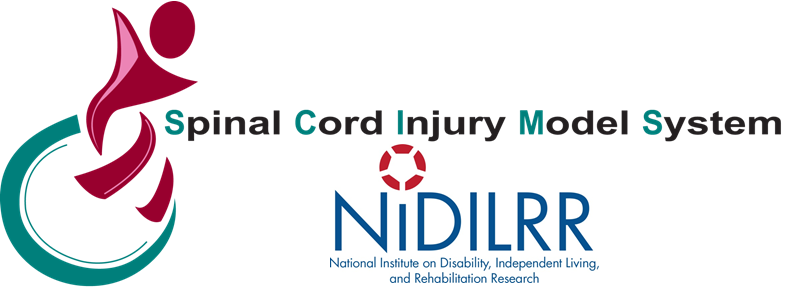Spasticity after spinal cord injury affects mobility, sleep, comfort, and quality of life
Model System researchers determine that medication is not as effective as physical therapeutic interventions, and identify promising approaches to alleviate symptoms of spasticity after spinal cord injury
East Hanover, NJ. August 13, 2021. A team of researchers representing six Spinal Cord Injury Model System Centers found that the lived experiences of people with spasticity after spinal cord injury were complex and multidimensional, but certain commonalities—such as stiffness, rather than spasms, as the most problematic characteristic—can inform further studies to identify effective treatments.
The article, “Characterizing the Experience of Spasticity after Spinal Cord Injury: A National Survey Project of the Spinal Cord Injury Model Systems Centers” (doi: 10.1016/j.apmr.2021.03.040) was published online by Archives of Physical Medicine and Rehabilitation on May 17, 2021.
This article is the result of a collaborative project led by Edelle C. Field-Fote, PT, PhD, of Shepherd Center's Crawford Research Institute and Emory University School of Medicine and Catherine L. Furbish, DPT, of Shepherd Center's Crawford Research Institute (co-lead authors). Jeanne Zanca, PhD, MPT, and Trevor Dyson-Hudson, MD, of Kessler Foundation co-authored this manuscript with Steven Kirshblum, MD, of Kessler Institute for Rehabilitation, Kessler Foundation, and Rutgers New Jersey School of Medicine and colleagues at other collaborating centers, including Natalie E. Tripp, MS, and Matthew J. Hayat, PhD, of Georgia State University; Allen Heinemann, PhD, and David Chen, MD, of Shirley Ryan AbilityLab; Elizabeth Felix, PhD, of University of Miami; Lynn Worobey, DPT, PhD, of University of Pittsburgh; and Mary Schmidt-Read, DPT, MS, and Ralph Marino, MD, of Thomas Jefferson University/Magee Rehabilitation.
Chronic spasticity—characterized by uncontrolled tightening or contracting of muscles—affects most people with spinal cord injury. Its detrimental effects range from restricting ability to perform daily activities and pain to negative self-image, and anti-spasmodic medications are often prescribed to mitigate symptoms. However, data were lacking regarding the lived experience of people with spasticity and the value of medication as a management strategy. To better address this common secondary condition, researchers and clinicians needed more information.
For this study, researchers conducted a national online cross-sectional survey of 1,076 people with spinal cord injury. Their aim was threefold: one, to identify the characteristics of spasticity that have the greatest impact on daily life and function; two, to describe relationships among characteristics of spasticity and injury-related attributes, and three, to gauge the perceived value of spasticity management strategies.
“Our goal was to characterize the qualities that people with spinal cord injury associate with their experience of spasticity, and to describe the relationship between spasticity and perceived quality of life,” said Dr. Field-Fote, who directs the Southeastern Regional Spinal Cord Injury Model System at Shepherd Center. “We found that there are five most common problematic experiences: stiffness all day, interference with sleep, painful spasms, perceived link between spasticity and pain, and intensification of pain before a spasm. We also learned that stiffness associated with spasticity was more common than spasms.”
The survey results clarified a range of touchpoints about how spasticity affects daily life. Participants reported that spasms most often occurred in response to movement-related triggering events, though participants also reported that spontaneous spasms were also among the most common types. Frequency of spasms appears to decline with age. The highest frequency of spasms was reported by 56 percent of respondents under 25 years old, decreasing to 28 percent among those over age 55. Most respondents reported using a combination of approaches for spasticity management.
According to Dr. Dyson-Hudson, co-director of the Northern New Jersey SCI System and director of the Centers for Spinal Cord Injury Research and Outcomes & Assessment Research at Kessler Foundation, “What was interesting is that participants reported stretching and exercise as more likely to improve spasticity than medication. With more than 90 percent of participants reporting daily stiffness and/or spasms, we need to emphasize these promising approaches and continue to investigate how we can help people with spinal cord injury manage their spasticity.”
Because stiffness was reported to be the most problematic aspect of spasticity and participants indicated that physical therapeutic interventions were more valuable than medications, the authors emphasize the importance of further study of non-pharmacological treatment approaches that can effectively manage stiffness. They also recommend identifying approaches for measurement of stiffness, which would be a valuable metric in determining appropriate interventions.
Funding sources: The contents of this article were developed under a grant from the National Institute on Disability, Independent Living, and Rehabilitation Research (NIDILRR grant number 90SI5016). NIDILRR is a Center within the Administration for Community Living (ACL), Department of Health and Human Services (HHS).
About the Spinal Cord Injury Model System: The Spinal Cord Injury Model Systems (SCIMS) are specialized programs of care in spinal cord injury that gather information and conduct research with the goal of improving long-term functional, vocational, cognitive, and quality-of-life outcomes for individuals with spinal cord injury. Funded by the National Institute on Disability, Independent Living, and Rehabilitation Research (NIDILRR), the 2016-2021 grant cycle comprises 14 SCIMS grantees. Each grantee contributes patient records to a national database, maintained by the National SCI Statistical Center, which tracks the long-term consequences of SCI and conducts research in the areas of medical rehabilitation, health and wellness, technology, service delivery, short- and long-term interventions, and systems research. Each SCI Model System is charged with disseminating information and research findings to patients, family members, health care providers, educators, policymakers, and the general public.
About Kessler Foundation: Kessler Foundation, a major nonprofit organization in the field of disability, is a global leader in rehabilitation research that seeks to improve cognition, mobility, and long-term outcomes, including employment, for people with neurological disabilities caused by diseases and injuries of the brain and spinal cord. Kessler Foundation leads the nation in funding innovative programs that expand opportunities for employment for people with disabilities. For more information, visit KesslerFoundation.org.
For more information, or to interview an expert, contact Carolann Murphy:
973.324.8382
